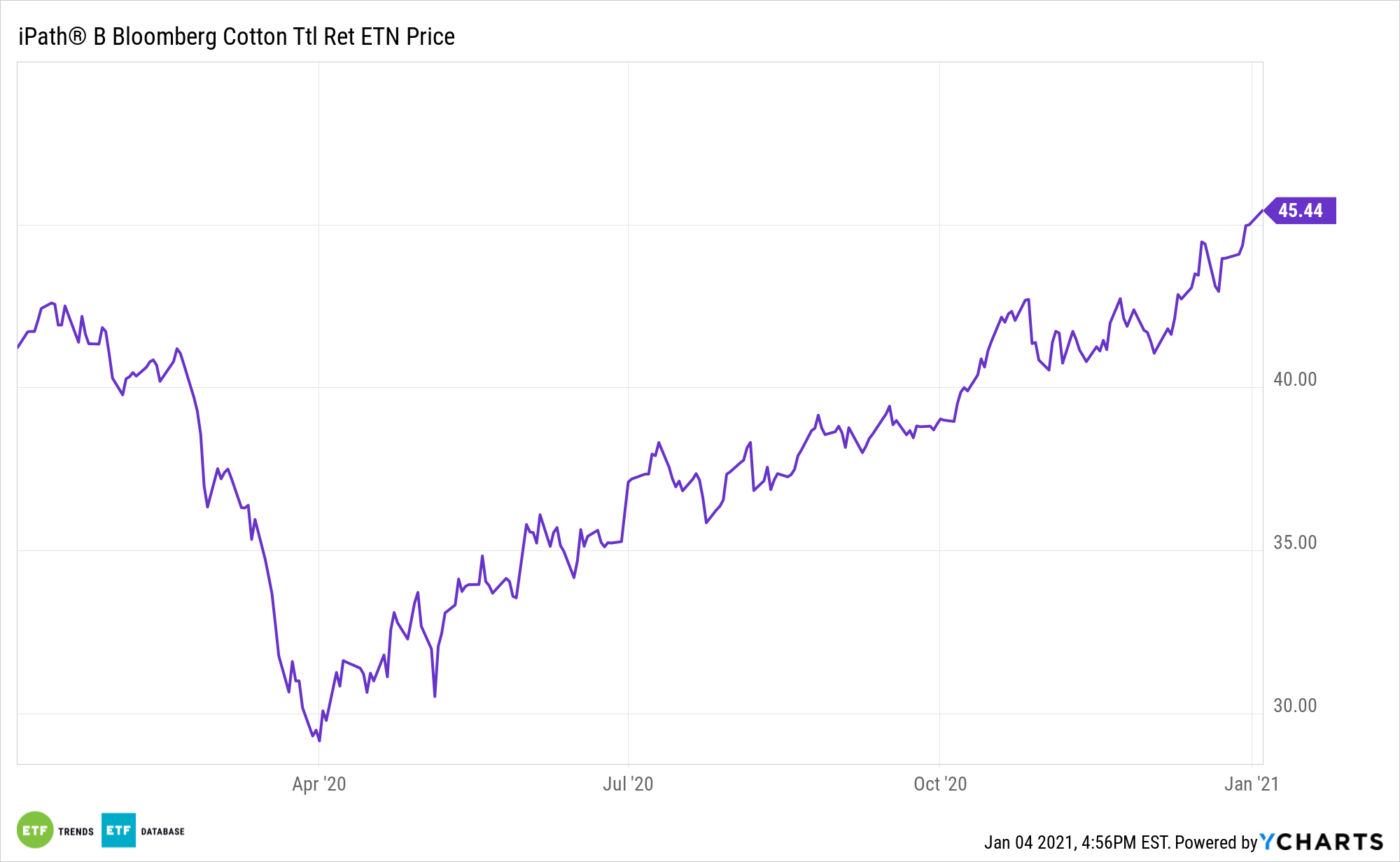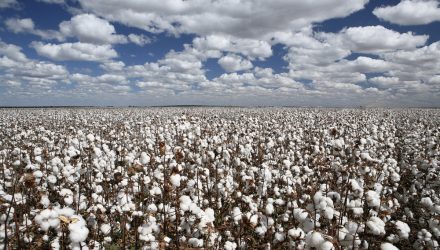Cotton prices and related exchange traded funds are at their highest level in almost two years as dry weather decimates crops and forced labor claims in China limit supply.
The iPath Series B Bloomberg Cotton Subindex Total Return ETN (NYSEArca: BAL) was 1.2% higher Monday, reaching its highest level since April 2019. Comex cotton #2 futures were up 1.1% to $0.7897 per pound. BAL has increased 15.3% over the past 3 months and gained 9.5% over the past year.
The most active cotton futures contracts advanced 55% since prices bottomed out last April in the early days of the coronavirus pandemic, the Wall Street Journal reports.

Dry Weather in the U.S. and Human Rights Concerns in China
A dearth of rainfall in key growing areas reduced projections for the current crop. The International Cotton Advisory Committee last month downwardly revised estimates for the global harvest by 1%. Meanwhile, the U.S. Department of Agriculture estimated the smallest domestic crop haul in five years.
Weather in Texas, the country’s top cotton-producing state, has been challenging. Walt Hagood, who grows cotton on 3,500 acres in western Texas, said the drought reduced yields by about a third this year.
“We’ve been in a bad cycle here for several years now,” Hagood told the WSJ.
Hurricane Hanna in South Texas also flooded fields and defoliated plants along the Gulf Coast.
“We’re shorter on cotton than we want to be,” Brian Adamek, who farms 1,200 acres in Victoria, Texas. “Mills are starting to crank up.”
Furthermore, the Trump administration last month banned cotton and cotton products from China’s top producer over allegations of forced labor across northwestern region of Xinjiang. Beijing is accused of targeting the country’s Muslim Uighur people as part of the largest mass detention of a minority group since World War II. Xinjiang makes up 85% of China’s total cotton output, according to the National Bureau of Statistics of China.
If the majority of China’s cotton is not allowed in America, mills will procure raw material elsewhere.
“China has to source cotton and yarn from other places,” Peter Egli, director of risk management for Plexus Cotton Ltd., told the WSJ.
For more information on the commodities market, visit our commodity ETFs category.
